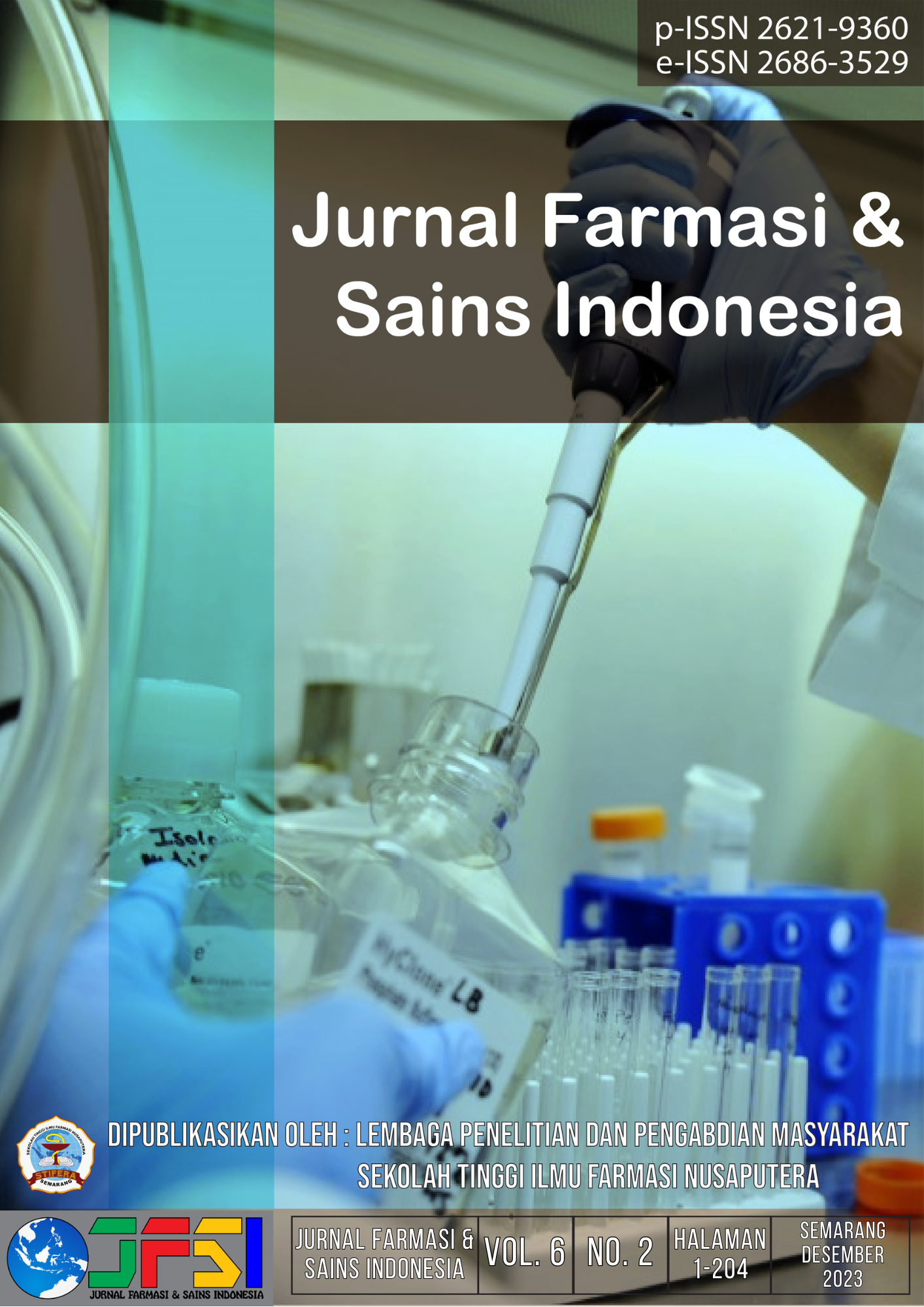Antibacterial Potential of Kresen dan Grean Tea Leaf against Staphylococcus epidermis
Main Article Content
Abstract
Acne is an inflammatory condition that can appear on the face, neck, chest and back. This disease is caused by the sebaceous glands producing too much sebum and is made worse by bacterial infections. One of the bacteria that causes acne is Staphylococcus epidermis. The aim of this research was to determine whether the combination of ethanol extracts of cherry leaves and green tea leaves had better antibacterial activity than single extracts against Staphylococcus epidermidis. This research is experimental research. The plants used are cherry leaves (Muntingia calabura L.) and green tea leaves (Camellia sinensis L.) which have secondary metabolite compounds as antibacterials. Compounds that act as antibacterials in tea leaves are catechins, tannins, flavonoids, steroids, triterpenoids and alkaloids. Meanwhile, compounds that act as antibacterials in cherry leaves are flavonoids, saponins, triterpenoids, steroids and tannins. The method used is disc diffusion, seen based on the clear zone around the disc. Test solutions of 5% single extract of cherry leaves and 0.5% single extract of green tea leaves obtained inhibition zones of 5.75 and 5.17mm. The combination of cherry leaf extract and green tea leaves with a ratio of 5:1, 4:2, 3:3, 2:4 and 1:5 obtained results of 9, 8.67, 8.5, 8.67, and 8.67mm wich showed antibacterial activity in the moderate category. The combination extract test solution showed synergistic antibacterial activity with other combination extracts.

